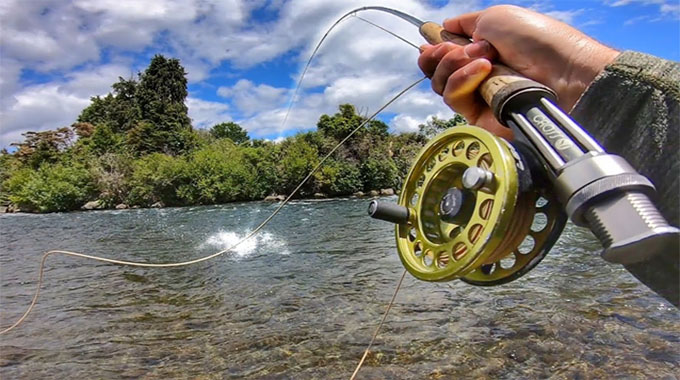Buying a new fly fishing rod may seem like a daunting task. There are many different types of rods on the market; how do you choose the best one for your needs? In this article, you’ll learn how to choose the right one for your needs, including length, casting ability, line weight rating, flexibility, etc. By the time you’re finished reading this article, you’ll be equipped to select a fly fishing rod that meets your needs and is as durable and long-lasting as possible.
Length
When choosing a fly fishing rod, it is essential to consider how much you’ll be casting the line. A long, heavy rod is easier to cast and land, while a short one keeps the fish closer to the surface. The weight of the rod is also an important consideration, as the smaller the number, the lighter the rod. If you’re only fishing for panfish, small trout, or fish from close quarters, you may want to consider a lighter-weight rod.
A short rod is ideal for small creeks and rivers, typically narrower than a few feet wide and have heavy brush growing along their banks. A seven-foot-long rod can be cumbersome in this situation, so stick with a six to seven-foot-long model. However, for other types of water, a longer rod is better suited for a more compact, heavy-lined style.
Casting ability
Fly fishing rods like the Fenwick fishing rods, Canada comes in many shapes and sizes, but their casting ability is one of the essential aspects. A fly fishing rod is an extension of your arm and plays a significant role in the effectiveness of your cast. Longer rods are easier to mand and reach over holes, but the disadvantage is their lack of maneuverability. Ideally, you should have at least 10 feet of line out of the reel. On the other hand, shorter rods are more flexible and allow you to fit in small spaces.
When casting a fly, there are several things to keep in mind. First, the distance of the line and the angler must match up. In a standard cast, the length of the cast is equal to the length of the line. A long line will require a long pause, while a short one will require a shorter one. The length of your cast will affect how long you need to pause between each casting stroke.
Line weight rating
A good line weight rating is vital for catching large fish and for casting long distances. You’ll want to use lighter line weights for trout, bass, and other species than heavier ones. Monofilament and braided lines are rated differently and are generally recommended for specific types of fish. Some rods are better for panfish than others, while others are ideal for more experienced fly fishers.
For small to medium-sized fish, a light line rod is ideal. For larger fish, medium-line rods will work. Medium-weight rods are suitable for trout, bass, and panfish. Heavy-line rods are perfect for casting large streamers and hooking big fish. These rods can also handle larger fish and are ideal for taking big fish. Finally, a light line rod is best for nymphs and dry flies.
Flexibility
When buying a fly fishing rod, you may want to consider the rod’s flexibility. This can help you cast farther and recover more quickly. A rod with less flex is easier to handle while casting. But a flexible rod is still essential if you want to cast heavy streamers. Read on to learn more about flex. Also, you can learn more about the recovery rate of your fly fishing rod and which one suits your needs best.
The flex on your fly fishing rod determines how easily it can break off the fly. A stiffer rod generates a tighter loop that cuts through the air for longer distances. On the other hand, a flexible rod is more apt to produce shallow loops that slow the line down more quickly. So if you’re planning to cast to spring creeks, a stiff rod might not be the best choice.
Price
A fly fishing rod’s price is primarily determined by the quality of materials used in its construction and the feel it gives the angler. A high-quality rod will cast a line better and feel more responsive on the water than a cheap one. Even experienced anglers can notice the difference between high-end and entry-level rods. Premium rods will stop moving much faster than lower-priced rods, giving the fisher a firmer feel.
High-quality rods range from $300 to more than $1,000. The higher-end rods are designed with the highest-quality materials and advanced technology. The price tag might be intimidating, but if you’re ready to invest in a quality rod and want it to last, this range can be an excellent place to start. Just keep in mind that you should never spend more than $150 on a fly rod and that you may want to consider a cheaper model for your first rod.













